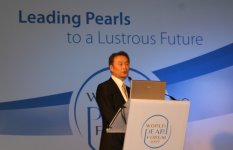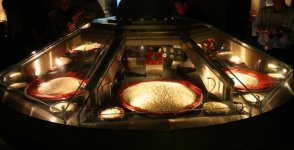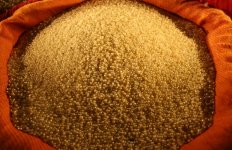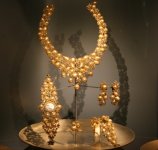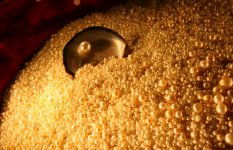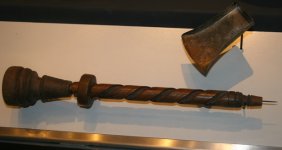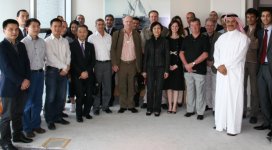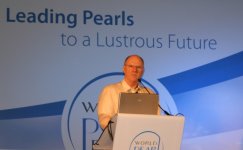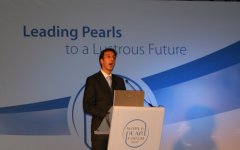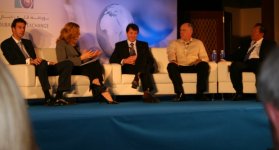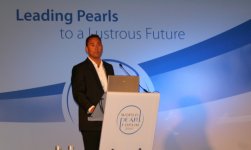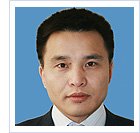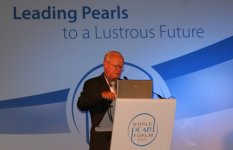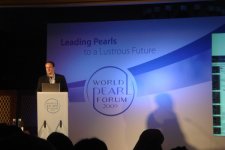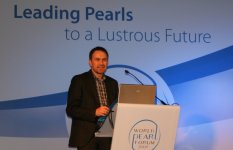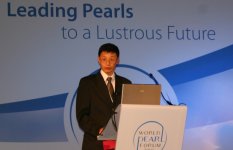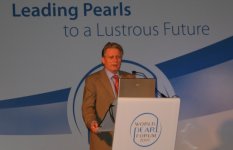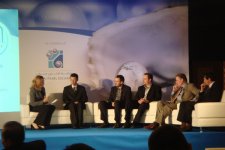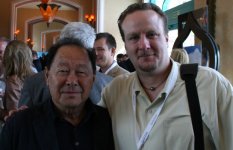Day 2
This was the start of the real forum.
The first speech was delivered by Ahmed Bin Sulayem, the executive chairman of the DMCC (Dubai Multi Commodoties Centre). It was a sort of welcome address. He told us that the DMCC has been working to revive Dubai's pearling heritage since 2002.
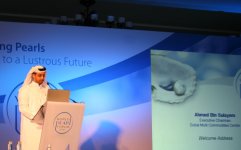
The second speaker was Gaiti Rabbani, executive director, Coloured Stones and Pearls for the DMCC. She spoke of the current financial crisis and mentioned that bling was dead - the perfect opportunity for the subtle beauty of pearls.
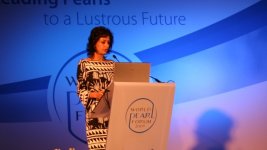
Gaiti was followed by Nicholas Paspaley. Paspaley's topic was
Branding a Modern Classic - The South Sea Pearl, but he primarily focused on the history of natural pearls in the UAE and his family's history in the cultured and natural pearl industry for the first 23 minutes.
He did post a question he received often, along with his answer.
Why is my company dominate in the South Sea Pearl Industry?
Although he mentioned many conspiracy theories abound, these are his answers to the question.
1. Paspaley is the only company that started collecting natural pearls before going into farming.
2. Paspaley is the only pearl farmer that continues to collect naturals.
3. Paspaley's first partners were Japanese from the Mitsubishi company, and he is still partnerned with them today.
4. Pearls are easy to produce, but fine pearls are very difficult to produce.
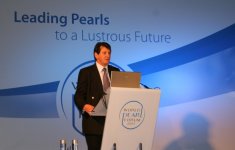
Paspaley was followed by the Inspiring Robert Wan of Rober Wan Tahiti. Mr. Wan told the story of his company's history, along with a very interesting account of his purchase of Marutea Sud. He said he purchased it immediately after a cyclone had decimated the atoll. The cyclone, however, was of great benefit as it "stirred" the waters of the lagoon, benefitting pearl production.
Wan also discussed the many crises that have affected the industry, including the earthquake in Kobe that created a drop in demand while production was high, leading to a drop in prices.
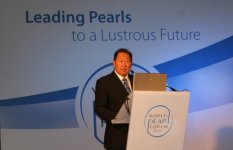
Following Wan, Noriyuki Morita took the stage. Morita is president of K. Mikimoto & Co., Ltd.
Mr. Morita started off in French, switching to Japanese after a few minutes, bouncing back and forth to bits of English. He primarily focused on Mikimoto's brands and jewelry lines, as well as the history of the company.
Mr. Morita was likely the most nervous of all speakers. While speaking French he appeared on the verge of fainting, but became a bit more comfortable after switching to Japanese. Even so, he spoke incredibly fast in Japanese. I think his nerves had gotten the better of him.
